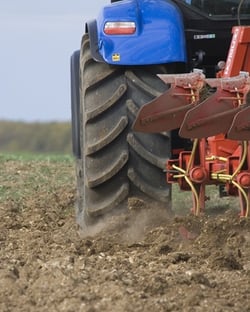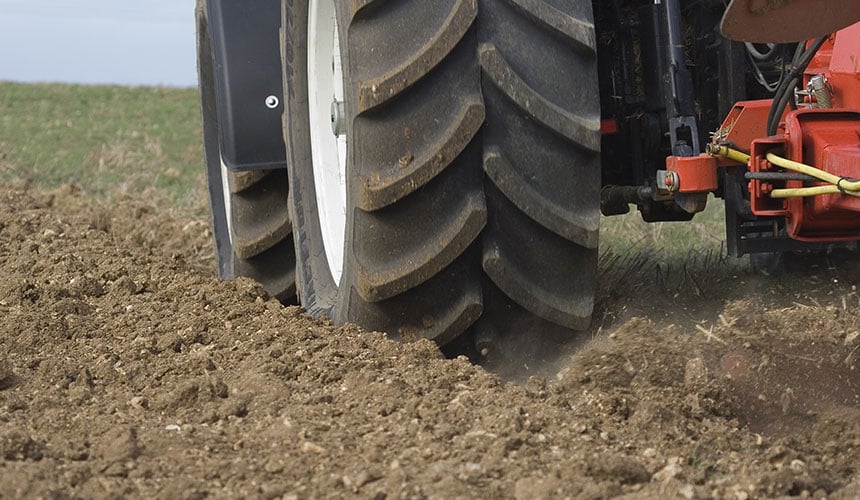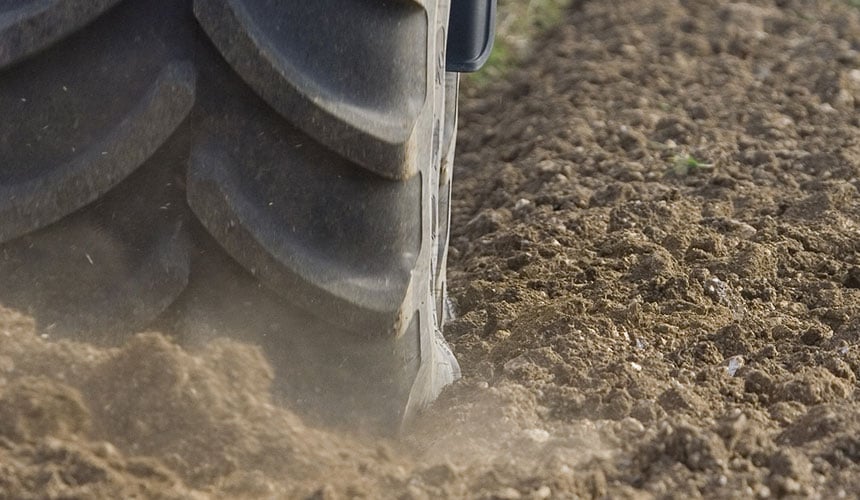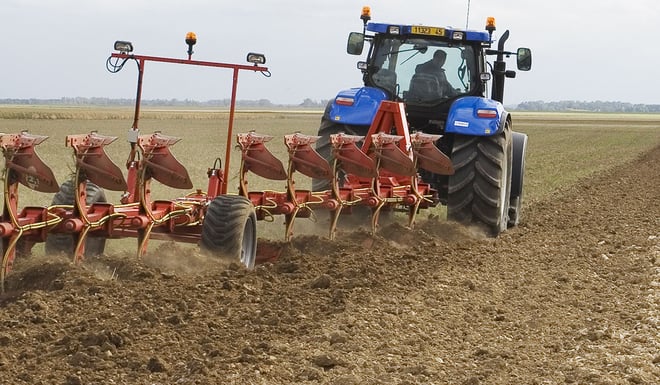Preparing the structure of the soil is vital to ensure your next crop emerges rapidly and regularly and to facilitate the circulation of vehicles and tooling.
Unfortunately, a bad choice of tyre, incorrect tyre pressure or ill-adapted tyre size may squash your ploughing work and result in excessive soil compaction, leading to an uneven surface and overly compacted areas which will reduce the quality of your crop and therefore your productivity.
Here are the best adapted tyres for successful ploughing:
Tractor tyres measuring 580 mm or less do not cause problems during ploughing

As the width of the furrow is around 40 cm in most cases, the tyre needs to fit into the bottom of the furrow. Tyres with a section of 580 mm or less generally do not cause any problem in relation to the width of the furrow. However, badly adapted tyre pressure will have highly negative consequences on your productivity.
Most of compaction occurs during the first passage of your agricultural machinery over the land, at the time of ploughing.
If you have noted a lot of soil compaction, but with a depth of less than 20 cm, this is not necessarily irremediable.
The extent of the compaction is likely to have increased because you regularly work in the fields with the wrong tyre pressure. Remember to check tyre pressure regularly right from the first ploughing operation.
If the soil compaction is much deeper (more than 20 cm deep) this can be due, in addition to bad pressure, to too much load on the axle. Think about increasing the size of your tyres, wider tyres with a bigger circumference, or opt for dual tyres.
If you use a wide tyre, it must be a low pressure IF or VF tyre
If you are covering large areas, you will need to increase the tractive force and choose a tyre with a diameter of more than 580 mm. You will then need to adapt the plough by using wider ploughshares and maintain the lowest possible pressure in order to fit into the furrows without squashing the soil.
Adjusting the plough may sometimes seem difficult, in particular for offset and alignment which are interdependent.

Adjusting offset consists in setting the width of the first body of work behind the coupling head. Depending on the working conditions and how large the tyres are, it can be adjusted by several centimetres. The plough is considered to be well-adjusted when there is no longer any connecting zone between each passage.
Alignment consists in ensuring that the pull line is parallel to the ploughing direction. When this is badly adjusted, the tractor may pull out of line frequently. You are then obliged to countersteer to keep in a straight line. The trailer is not perfectly in line with the ploughing direction, which leads to additional tractive effort, extra fuel consumption and considerable wear to the tyres.
Well-adjusted plough settings and the latest generation wide low-pressure tyres
 The sidewalls of VF or IF agricultural tyres are reinforced to give increased flexion which makes it possible to decrease the inflation pressure sufficiently to extend the contact area with the ground and ensure a better load distribution on the ground. Your ploughing is not squashed even if you are using a very heavy implement.
The sidewalls of VF or IF agricultural tyres are reinforced to give increased flexion which makes it possible to decrease the inflation pressure sufficiently to extend the contact area with the ground and ensure a better load distribution on the ground. Your ploughing is not squashed even if you are using a very heavy implement.
The Bridgestone-agriculture.eu blog is written and administered by tractor tyre experts who are available to provide you with the advice you need on the subject of your agricultural tyres. They allow you to maximise your productivity with information on all subjects linked to tyres: Technical data for agricultural tyres – Agricultural tyre performance – Air pressure advice – Solutions to avoid soil compaction – Sprayer tyre pressure – Why and how to ballast your tractor tyres – The 6 principal mechanical causes of abnormal wear to your tractor tyres – etc….
To learn more and boost your farm's profits, les Experts du pneu de tracteur is offering you a free, detailed white paper that explains the essential role your agricultural tyres play in your productivity.
Most people who read this article have also read some of the following articles:
This information is intended only to make you aware of the technical and functional aspects of agricultural tires and their use. It does not allow you to make a judgment or a definitive conclusion on a given problem. Only your agricultural tire expert is able to make a technical assessment and take a final decision, case by case.
Leave a
commentary
Your email address will not be published.
Required fields are indicated with *








